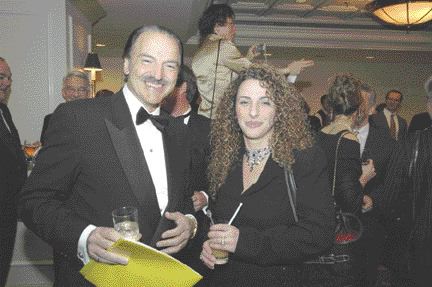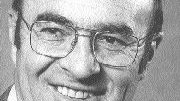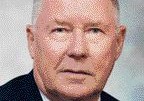Six new inductees entered the Canadian Mining Hall of Fame in a ceremony at Toronto’s Fairmont Royal York Hotel on Jan. 19, a night that gave the industry a window on its recent history.
Master of ceremonies Pierre Lassonde, who introduced himself as the president of Newmont Mining, “as of tonight, the former largest gold company in the world,” noted the current atmosphere in the industry. “Our industry has never had it so good . . . Just today I heard a nickel truck was hijacked.” (It was true; the truck was ultimately recovered.)
The dinner was attended by seven members of the Hall of Fame: William Brissenden, Marsh Cooper, Gerald Hatch, William James, Michael Knuckey, Norman Paterson, and Harry Seigel.
Physicist and metallurgist John Convey, credited with building the Mines Branch and its successor, the Canada Centre for Mineral and Energy Technology, into prominent research institutes, died only the week before the induction ceremony, and his plaque was accepted by his son, also named John.
Convey said his father believed that, “old men give good advice to console themselves for being no longer in a position to set a bad example,” but between good examples during his career and his enthusiastic presentations to industry forums, Convey did well. “Those of you old enough to know him probably heard him at a CIM meeting,” said the younger Convey.
His father’s technique for presentations consisted of taking a small piece of notepaper, listing five points he wanted to get across, and two jokes. “He wouldn’t study the five points, he’d study the two jokes.”
President and later chairman of Alcan, Nathanael Davis was the other posthumous inductee to the Hall of Fame. His time as president (1947-1979) was marked by tremendous growth in Alcan, especially internationally, and by the development of the vast Kitimat smelter complex on the west coast.
Davis succeeded his father Edward in that office, Lassonde said, and “today the company would probably be indicted by the SEC for nepotism.”
Davis’s son, Al Davis, said of his father that “his daily reading of The New York Times was always accompanied by a shake of his head as he read more and more stories of the greed factor in corporate America.” Davis, in contrast, had been an apostle of corporate social responsibility long before it became a clich, inculcating principles of ethical conduct at Alcan that made the company greatly admired.
A career as a metallurgist and project-builder earned Bruce Grierson — “one of mining’s unsung heroes,” said Lassonde — a place in the Hall of Fame. Grierson had worked at the Quebec Iron and Titanium Co. at Sorel, Que., to modernize its titanium smelter, but was eventually faced with the obsolescence of QIT’s main product. QIT “were people with a vision — they hadn’t, however, done much homework,” said Grierson, who hit on developing a process to use ilmenite from beach sands as a titanium ore suitable for pigment uses, and then bulled the project through QIT. “Making the world a whiter place consumes much more titanium,” said Grierson, “so it hasn’t been all that bad.”
Grierson noted that his staff at QIT had gone on to manage projects at the Diavik diamond mine in the Northwest Territories, at the Grasberg copper-gold mine in Irian Jaya, Indonesia, and at Impala Platinum in South Africa.
In introducing another new inductee, economic geologist Richard Hutchinson, Lassonde said, “no type of deposit failed to excite his enthusiasm — well, he is a geologist.”
Hutchinson, retired as a professor from the University of Western Ontario and the Colorado School of Mines, was inducted for his contributions to mineral exploration as a pioneer in the understanding of volcanogenic massive sulphide deposits. Despite that, he began his speech by singing a folk ditty from that most epigenetic of mining camps, the “Cobalt Song,” and paid tribute to Western’s George Suffel, whose studies in the camp launched the academic careers of both Hutchinson and another scholar of massive sulphides, Steven Scott.
Reminiscing about the indignities suffered in the field by his graduate students, Hutchinson read off a Who’s Who of Canadian mineral exploration and expressed his admiration for them: “Many of (my students) have distinguished themselves.”
His time as a professor having required him to set up frequent student field trips, Hutchinson recalled that in Sudbury in the 1970s, “Inco would take ladies underground but not cameras, and Falconbridge would take cameras but no ladies. I really screwed up one year.”
James McDougall, who spent much of his career in the Ventures Ltd. and Falconbridge Nickel organizations, leading their highly successful western exploration office in the 1970s, was honoured for his numerous discoveries in British Columbia and the Yukon, and particularly for his pioneering use of aircraft in remote areas and of new geophysical and geochemical techniques.
Among McDougall’s more unusual achievements was finding geologist Robert Sheldon and a pilot after their plane crashed in the northwestern B.C. mountains. McDougall, it was recalled, went looking for gossan outcrops from the air, reasoning — rightly, as it turned out — that Sheldon and his pilot would have been doing the same thing.
McDougall, who observed that his father had been building the smelter at Grand Forks, B.C. “at the turn of the century — the last one,” saw four of his major mineral discoveries enclosed, after the fact, by parks. The biggest, the Windy Craggy copper-cobalt deposit, is now part of a B.C. provincial park and a United Nations Heritage Site, and McDougall said of a friend that “I think he dropped $50 million on it when the NDP took over.”
The last inductee, and the youngest, Seymour Schulich, was introduced by long-time business partner Lassonde as “living proof that a small opportunity combined with entrepreneurial talent can create success.”
“My luck,” said Schulich, “I get the Billy Crystal of mining to introduce me.” Still, his association with the Billy Crystal of mining was marked by tremendous success with their creations, Franco-Nevada Mining and Euro-Nevada Mining, the first companies to be founded on mineral royalties. Lassonde recalled telephoning Schulich when he negotiated the first purchase of a gold royalty for US$2 million — then Franco-Nevada’s entire treasury.
“I called up Seymour and I said, ‘I’ve got good news and I’ve got bad news . . . We’ve purchased our first royalty . . . He said, ‘that’s fantastic, what’s the bad news?’ and I said, well, we’ve got no more money.”
Schulich’s acceptance — punctuated by one-liners, some at his own expense — included an introduction of the whole Franco-Nevada staff, paying tribute to them as “a great team.”






Be the first to comment on "Schulich and others join Canadian Mining Hall of Fame"